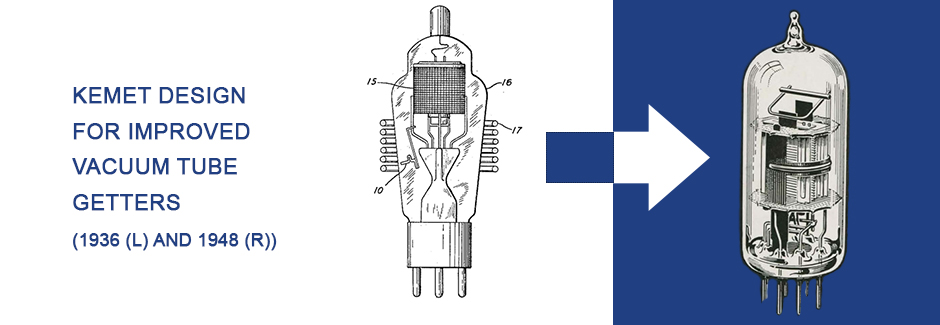We take technology for granted today, each of us effortlessly interacting with computers for hours upon hours throughout the day. Yet less than a century ago, computers as we know them didn’t exist. When they first came into being, KEMET was there. KEMET getters, found inside of vacuum tubes, were essential in pushing technology forward through the 1930s and 1940s.
Upon a request from the manager of the Radio Division at National Carbide Company, scientists at KEMET led by founder Hugh Spencer Cooper’s deputy Maurice D. Sarbey, developed and refined vacuum tubes to exceed the highest specifications available at the time. To begin, the team developed a filament with a new thorium oxide compound that reduced emissions, allowing the tubes to last longer. Pushing boundaries through the development of metallic alloys, they created a getting device made of a barium and strontium alloy. This innovation boosted KEMET into the vacuum tube business after Cooper perfected the getting device.
The year was 1931. Radio was a popular form of entertainment, with television in its early years. The Empire State Building was completed in New York City and the Star Spangled Banner became our national anthem. It was the year of Thomas Edison’s last patent and his death. And KEMET’s getters were the latest part fueling the expansion of technology. The getting device worked by removing unwanted gases in vacuum tubes, significantly extending their usage and reliability.
The possibilities were now endless. While the vacuum tubes were initially meant to power commercial radios, they were integral in the development of more complex electronics, like televisions and computers. In fact, the first computer, the Colossus of 1934, used over 3000 vacuum tubes. KEMET getters were in our homes for entertainment, and energizing important work around the world. The increased efficiency and durability of vacuum tubes outfitted with KEMET getters allowed for reliable radio communications among the Allies in WWII. KEMET getters were also included in the ENIAC, an early general purpose computer dedicated at the University of Pennsylvania in 1946. The ENIAC allowed for computations one thousand times faster than that of electro-mechanical machines.
The success of the KEMET getter helped to refocus the business in important ways. This was the dawn of KEMET’s focus on manufacturing signature products, a focus that continues today. KEMET also sought to perfect existing technology, improving the quality of products through innovation and refinement of technological breakthroughs. In addition, KEMET insulated itself from the rise and fall of the marketplace by focusing on essential components found within electronic devices, rather than consumer goods. This is how KEMET is found in every home.
